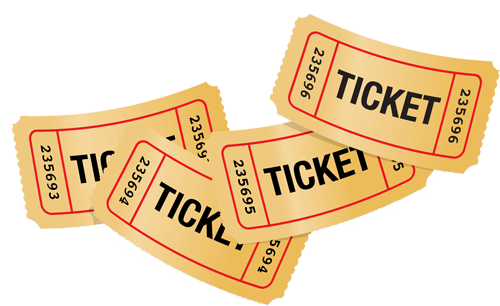 Here’s the Ticket!
Here’s the Ticket!
The industry debates continue as different opinions are shared on social media and in the trade press. Here are three topics that continue to interest the amusement game industry:
Tickets vs.Ticketless? More results are coming in that show that going from a debit card system using tickets to ticketless (e-tickets) results in a revenue drop of 15% to 20%. This is predictable because there are certain games that are not as appealing to play without tickets (namely pushers and other quick coin games). Once the underperforming games of this category are removed and replaced with other new games (at quite an unexpected investment cost), the revenues pick up to some degree but not to where they were.
I have personally been involved with 5 new FEC’s that have opened ticketless and in all 5 the redemption games are underperforming. The owners do not have any way of acknowledging this as they do not have decades of redemption game operating experience and previous revenues to fall back on.
We are planning on converting a debit card operated waterpark game room that has been using tickets for several years over to ticketless redemption in the near future (at the request of the owner) and am looking forward to learning the results. We will be keeping tickets as prizes in the merchandisers but encouraging the winners to turn in the ticket bundle forms (which we most likely will glue together with a clear coating so our staff does not have to keep making additional ticket bundle forms). The upside here is not having to deal with ‘wet’ redemption tickets being fed into the ticket eaters.
I have also been involved in converting more than a dozen long standing token operated FEC’s over to debit card operation and have initially seen a 15%-25% increase in redemption revenues before any promotions and VIP programs were implemented. Once these programs were implemented, the revenue increased further. To make the best of both worlds, over 90% of our revenue-share FECs and about 75% of our AEM clients are now giving the customer the ‘option’ of receiving tickets or e-tickets and the result is that half of the guests are choosing tickets and half are choosing e-tickets. Initially it does make a difference in what the ‘default’ setting is (tickets or e-tickets) as new customers tend not to make a decision within the 20 seconds we give them because they do not understand what the choice means unless it is explained to them upfront.
All readers of the Redemption & FEC Report have noticed the amazing earnings that are generated by having bundles of tickets as prizes in cranes and rotaries and other types of merchandise dispensing games. I believe that using bundles of tickets in merchandisers, even in a ticketless operation, is a major reason not to ever abandon the power of tickets.
Should guests be able to purchase redemption prizes, purchase redemption tickets, or neither?
A large majority of FEC operators are in agreement that redemption prizes should not be sold. The main reason is that you would be telling your customers that the perceived value they are placing on a ticket is less and that breaks the magic spell of redemption. We want the customers to save their tickets and come back again and play more games. AEM recommends never selling the merchandise. With many high perceived value prizes, our customers perceive that the value of a redemption ticket is four times what it actually is when wholesale vs. retail costs are compared.
Selling tickets has both pros and cons. Sometimes in order to please a customer selling tickets can be the best solution rather than having an unhappy customer. AEM uses a specific formula for selling tickets to those parents who ask and have no additional time before they have to leave the FEC and their child does not have enough tickets to get the one prize they want. The key is to charge the same amount that it would cost the customer to play and win the tickets and still retain your overall 25% cost of sales goal.
For those of you that operate on a ¾ cent ticket value, the AEM formula that has proven itself to work over the past 15 years is:
| Value | % Cost | ||
| $ 0.25 | = 8 tickets | $ 0.06 | 24% |
| $ 1.00 | = 32 tickets | $ 0.24 | 24% |
| $ 5.00 | = 180 tickets | $ 1.35 | 27% |
| $10.00 | = 380 tickets | $ 2.85 | 28.5% |
Should game price/play be shown in dollars/cents or in points?
Most FEC’s keep it simple and offer per play pricing in dollars and cents. Yes, we know that some FECs have a point system that is purposely confusing because they believe that the customers will spend more and spend it faster. All AEM clients and all Alpha’s revenue-share partners use the dollars and cents method. We start with a basic 25 cent unit credit and then we show all of the discounts to VIP customers and any off peak reduced pricing to all customers. At the end of the week our average unit credit value is close to 21 cents (ranging from 20 cents to 22 cents), depending on how many discount programs were in effect and utilized that week.
Our philosophy has always been to limit per capita spending to be the same as our other local/regional out of home leisure competitors and focus on getting a higher frequency of repeat customers. We have even given locals a favorable discount over tourists in some markets and the locals have helped us stay open year round which is a thing of beauty. I have recently consulted for a large FEC where customers would receive points on their cards for purchasing certain packages. Limits were not put into place for any of the individual attractions so a customer could easily use up all of their points by going on a high point attraction a couple of times and not realize it. It took me a few hours to figure out their point system because even management and staff did not always follow it. They had lost many customers over the years and were wondering why? The main reason was that a large majority of the customers felt they were being ripped off. This should have been easily spotted by noting that there was a very low percentage of repeat customers. AEM believes that ‘customer trust’ is a key part of the foundation in developing a repeat customer base.



